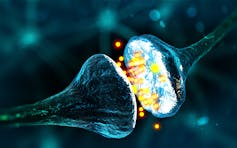The recent finding that telling lies induces changes in the brain has stimulated a number of misrepresentations that may wreak more harm on our understanding than the lies on which they report. CNN’s headline runs, “Lying May Be Your Brain’s Fault, Honestly,” and PBS reports, “Telling a Lie Makes Way for the Brain to Keep Lying.”
These stories are based on a study from University College London using a brain imaging technique called functional MRI. The authors report that as subjects tell lies, activation of the amygdala, an area of the brain associated with emotion and decision making, actually decreases, suggesting that subjects may become desensitized to lying, thereby paving the way for further dishonesty.
Of course the notion that lying breeds dishonesty is nothing new. Nearly 2,500 years ago, the Greek philosopher Aristotle suggested that our character – whether we are brave or cowardly, self-indulgent or self-controlled, generous or mean – is the product of habit. Virtues and vices are not acts but habits, he said, and we become what we accustom ourselves to doing.
What seems to make the University College study novel and newsworthy is the linkage between a pattern of conduct – lying – and changes in patterns of brain activity. The authors offer what they call “a mechanistic account of how dishonesty escalates, showing that it is supported by reduced activity in brain regions associated with emotion.”
Brain not simply a machine
Findings of this sort are subject to misinterpretation in three potentially misleading ways. First, there is the suggestion that a behavior such as lying can be explained “mechanistically.” Saying so implies the brain is a mechanism that can be accounted for in purely mechanistic terms. In fact, however, calling the brain a machine vastly oversimplifies it.

We know, for example, that the brain contains nearly 100 billion neurons with perhaps 150 trillion synapses. This may sound like an incredibly complex thinking machine, but no analysis of the brain as gray matter, electrical circuitry, or neuro-chemistry makes the leap from machinery to our experience of the world.
As Nobel laureate Charles Sherrington, one of the founders of modern neuroscience, famously declared, natural sciences such as physics and chemistry may bring us tantalizingly close to threshold of thought, but it is precisely at this point that they “bid us ‘goodbye.‘” The language of natural science is inadequate to account for human experience, including the experience of telling a lie.
Consider Mozart’s “A Little Serenade” or Rembrandt’s self-portraits. We can describe the former as horsehair rubbing across catgut, and we may account for the latter as nothing more than pigments applied to canvas, but in each case something vital is lost. As any reader of Shakespeare knows, a lie is something far richer than any pattern of brain activation.
The brain is not the mind
A second dangerous misinterpretation that often arises from such reports is the notion that brain and mind are equivalent. To be sure, altering the chemistry and electrical activity of the brain can powerfully affect a person’s sensation, thought, and action – witness the occasionally remarkable effects of psychoactive drugs and electro-convulsive therapy.
But in much of human experience, the causal pathway works in the opposite direction, not from brain to mind, but mind to brain. We need look no further than the human imagination, from which all great works of art, literature and even natural science flow, to appreciate that something far more complex than altered synaptic chemistry is at work in choices about whether to be truthful.
In fact, our capacity to lie is one of the most powerful demonstrations of the fact that the human mind is not bound by the physical laws that scientists see at work in the brain. As Jonathan Swift puts it “Gulliver’s Travels,” to lie is “to say the thing which is not,” perhaps as profound a testimony as we could wish for free will and the ability of the human mind to transcend physical laws.

In the Genesis creation story, it is after woman and man have tasted the fruit of the tree of the knowledge of good and evil and hidden their nakedness that God declares that “they have become like us.” To be able to lie is in a sense divine, implying a capacity to imagine reality as it is not yet. If used appropriately, this capacity can make the world a better place.
Blaming the brain
Perhaps the most dangerous misapprehension that can flow from new findings in brain science is reflected in the CNN and PBS headlines: the notion that lying is “your brain’s fault” or that “the brain keeps lying.” The idea, it seems, is that lying is something that happens in and by the brain, much as a dysrhythmia happens in the heart or strangulation happens in the bowel.
In reality, of course, lying is not the fault of the brain but the person to whom the brain belongs. When someone tells a lie, he or she is not merely incorrect but deceptive. People who lie are deliberately distorting the truth and misleading someone in hopes of gain, placing their purposes above the understanding and trust of the person to whom they lie.
Even in the era of functional neuro-imaging, there is no lie detector that can tell with certainty whether subjects are telling the truth. There is no truth serum that can force them to do so. At the core of every utterance is an act of moral discernment that we cannot entirely account for except to say that it reflects the character of the person who does it.
Lying is not a matter of physical law, but of moral injunction. It is less about chemistry than character. It reflects not merely what we regard as expedient in the moment but who we are at our core. Ironically, while it is less momentous to act well than to be good, we are in the end little more than the sum of all the moral compromises we have made or refused to make.
This is why we abhor the deceptive conduct of narcissists, crooks and politicians, and why we esteem so highly the characters of people who manage to tell the truth even when it is especially inconvenient to do so. Such acts are morally blameworthy or exemplary precisely because we recognize them as the products of human choice, not physical necessity.![]()
The Third Eye Chakra transcends time. It is located in the brain, at the brow, above the base of the nose. The Third Eye Chakra focuses on seeing everything as it is as a "witness" or "observer" and being mindful of each moment. It is not only the seat of wisdom, but also a seat of conscience. When the third eye is open, you not only see but you also understand. When this chakra is fully activated, both hemispheres of the brain function synchronize where creativity is integrated and balanced with logical and analytical thinking.
Richard Gunderman, Chancellor's Professor of Medicine, Liberal Arts, and Philanthropy, Indiana University
This article is republished from The Conversation under a Creative Commons license.



































